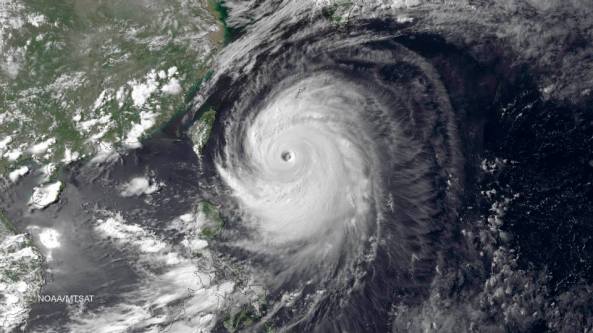Having now entered the second half of the Atlantic hurricane season I thought it time to write up a short post about these powerful natural events.
First we must resolve an important issue: what is the difference between cyclones, hurricanes and typhoons? The answer is: there is no difference! These are just different names for the same weather phenomenon originating in different geographic locations.

Tropical storms are characterised by their geographic origins. (NASA)
Hurricane Genesis
Hurricanes are very large storm whose birth originates in the tropical oceans. They rotate about a central axis commonly called ‘the eye’. The oceans are a massive source of heat energy. Variations in the sea surface temperature result in pressure differences in the atmosphere which cause storms to build up.
To be classified as a hurricane a storm must reach wind speeds of at least 74 miles per hour. The rotation of the Earth gives these storm their characteristic spiral shape. Cyclonic storms in the northern hemisphere rotate anticlockwise while those in the southern hemisphere rotate clockwise.
Hazards
The main hazards from hurricanes are strong winds (up to 150 miles per hour for the very large events) and high volumes of rain. Hurricane winds can uproot trees and destroy houses. Large amounts of rainfall in a short period of time result in floods and rising groundwater tables.
The water-clogged landscape remains unstable, with increased risk of landslides and surface failures for many years after a particularly large event. For example, there were increased number of landslides in Taiwan for 6 years after Cyclone Bhola.

Extensive damage after the 2005 hurricane Katrina. Total damage > $100 billion USD.
(Mark Wolfe)
Historically significant hurricanes
The effect hurricanes have on people’s lives is depicted in the word hurricane itself; after the Caribbean god of evil, Hurrican. They are a devastating force of nature.
- The 1970 Cyclone Bhola is historically the worst event for deaths with reported numbers as high as 500,000 people dead, mostly in Bangladesh.
- Hurricane Katrina which struck the east coast of the U.S. in 2005 is the most costliest hurricane with overall damage exceeding $100 billion.
- The 1979 Cyclone Tip was the most intense hurricane ever recorded with wind speeds around 190 miles per hour. It was also the largest hurricane with a diameter around 2,170 kilometres.
- Hurricane Sandy (U.S. east coast, 2010) was an abnormally large event due to the fusion of a tropical hurricane and a winter storm. With rising temperatures due to global warming these hybrid-storms are expected to become more frequent.
What can we do?
Cyclone Mahasen hit Sri Lanka, Bangladesh and Burma earlier this season in May and resulted in far less deaths than expected thanks to swift action from the local governments. This shows that rapid response can save lives.

Proper preparation and sufficient warning can save thousands of lives every year.
(Geoffrey Alan)
Houses with appropriate shelters (as in the U.S.) need to be built in hurricane prone regions. Proper training should be given from early school level onwards on the appropriate actions to take before and after such events: e.g. having enough clean drinking water, tinned food, spare batteries for lights, mobile phone chargers, first aid kits etc.
Have a rapid response system in place from the national governmental level to manage pre-event evacuation (if needed) and post disaster recovery.
There is no clear agreement on what sort of affects climate change and global warming will have on hurricanes. However most scientists agree that the change will be for the worse whether it is in the form of increased number of hurricanes each year, increased size of the hurricanes or changes to the length of the hurricane season is uncertain. We need to investment more into understanding the science behind these storms and the affects global warming will have on their magnitude and frequency of occurrence.
Ekbal
More information:
[1] National Hurricane Centre
[2] George M. Dunnavan & John W. Dierks (1980). An Analysis of Super Typhoon Tip (October 1979), Joint Typhoon Warning Center,1980
[3] www.weather.com/maps/news/atlstorm18/gulfofmexicosatellite_large.html














